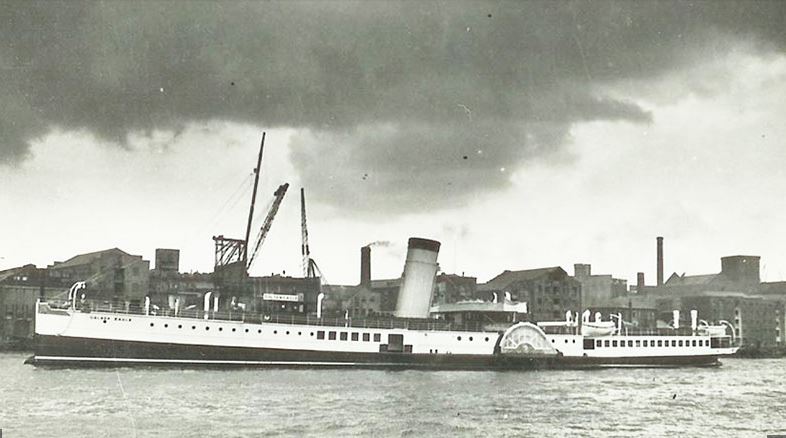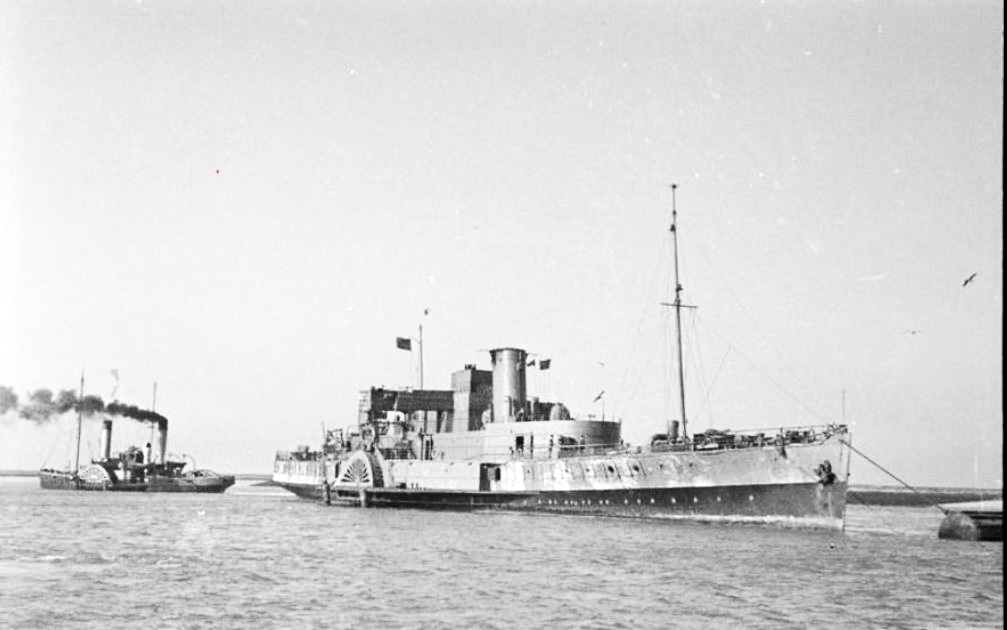Difference between revisions of "HMPS Golden Eagle"
From Our Contribution
(→Remarks) |
|||
| Line 29: | Line 29: | ||
==Remarks== | ==Remarks== | ||
| − | Owners were the General Steam Navigation Company Ltd | + | Owners were the General Steam Navigation Company Ltd, and her regular run was from Tower Bridge, London to northern Kent resorts (Margate and Ramsgate). Served during WW1 as a troop carrier between January 1915 and November 1919 during which time she carried 518,101 men across the English Channel. She also carried stores and early aircraft to France, and was in the process of being converted to a mine layer when the war ended. She Returned to her regular London run to the North Kent resorts of Margate and Ramsgate between the wars. |
| − | Fitted out as an anti-aircraft ship in late 1939, based at Sherness. In late May 1940 made several crossings to evacuate 1,751 soldiers from Dunkirk. The Golden Eagle was the last vessel to leave the Dunkirk area loaded with troops on 4 Jun 1940. She also was used to carry more than 3,000 London children to Great Yarmouth on the east coast of England. Her primary WW2 use was as an anti-aircraft ship in the Thames. Armament | + | Fitted out as an anti-aircraft ship in late 1939, she was based at Sherness. In late May 1940 she made several crossings to evacuate 1,751 soldiers from Dunkirk. The ''Golden Eagle'' was the last vessel to leave the Dunkirk area loaded with troops on 4 Jun 1940. She also was used to carry more than 3,000 London children to Great Yarmouth on the east coast of England. Her primary WW2 use was as an anti-aircraft ship in the Thames. Armament comprised 4 x 2 pounder single Anti-Aircraft, 2 x 20mm single Anti-Aircraft, 2 x quadruple .303, and 2 x light machine guns. Two quadruple rocket launchers were fitted at a later date. |
Latest revision as of 19:30, 15 January 2023
Contents
Remarks
Owners were the General Steam Navigation Company Ltd, and her regular run was from Tower Bridge, London to northern Kent resorts (Margate and Ramsgate). Served during WW1 as a troop carrier between January 1915 and November 1919 during which time she carried 518,101 men across the English Channel. She also carried stores and early aircraft to France, and was in the process of being converted to a mine layer when the war ended. She Returned to her regular London run to the North Kent resorts of Margate and Ramsgate between the wars.
Fitted out as an anti-aircraft ship in late 1939, she was based at Sherness. In late May 1940 she made several crossings to evacuate 1,751 soldiers from Dunkirk. The Golden Eagle was the last vessel to leave the Dunkirk area loaded with troops on 4 Jun 1940. She also was used to carry more than 3,000 London children to Great Yarmouth on the east coast of England. Her primary WW2 use was as an anti-aircraft ship in the Thames. Armament comprised 4 x 2 pounder single Anti-Aircraft, 2 x 20mm single Anti-Aircraft, 2 x quadruple .303, and 2 x light machine guns. Two quadruple rocket launchers were fitted at a later date.
Returned to her owners in June 1945, she was used initially as an accommodation ship before returning to normal service until she was laid up in 1949. Broken up by Thmas W Ward Ltd at Grays, Essex in 1951,

